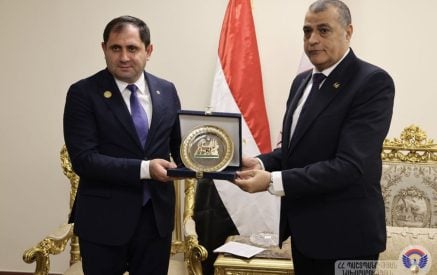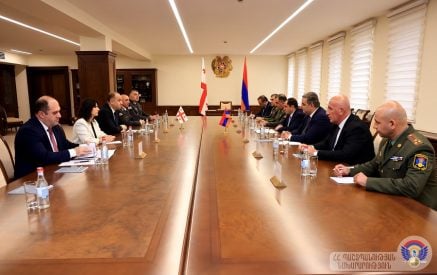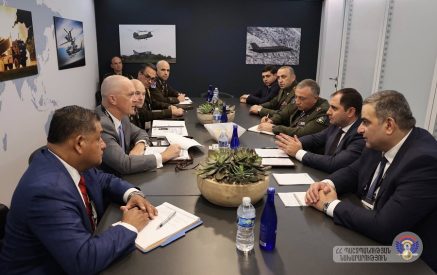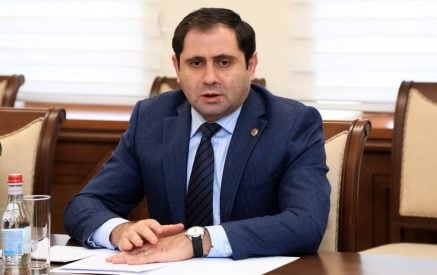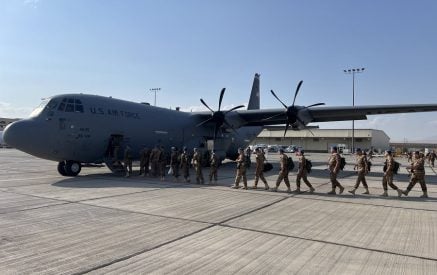The Armenian Weekly. The Armenian Ministry of Defense (MOD) has condemned an ongoing combined arms exercise being conducted by the Azerbaijani military as “a threat to the regional security environment.” Some 10,000 military personnel, 120 tanks and armored vehicles and 200 missiles and artillery systems have been participating in a large-scale military maneuver not far from the Artsakh Line-of-Contact (LoC) since May 18.
State-run news outlets in Azerbaijan have described the military exercise as an assessment of their military’s readiness as well as to test new precision weaponry in their arsenal. However, the scale and the timing of this exercise in the midst of the ongoing global COVID-19 pandemic, which both Armenia and Azerbaijan are still struggling to contain, have garnered criticism and concerns over escalation of tensions in the region.
In an earlier statement, the Armenian MOD announced that “any attempt to move military hardware and personnel close to the Armenian border or the Line of Contact with Nagorno-Karabakh would be viewed as a provocation and have appropriate consequences.” It also accused Azerbaijan of ignoring United Nations Secretary-General Antonio Guterres’ recent call for a global ceasefire throughout the length of the crisis. While Armenia publicly pledged to uphold the ceasefire, Azerbaijan remained mum.
Similarly, Armenian Prime Minister Nikol Pashinyan announced, after a May 8 phone call with Pope Francis, that he would support the Pontiff’s call for an “immediate ceasefire in all corners of the globe and unity as the world is exposed to an unprecedented threat.”
Read also
However, the global pandemic doesn’t seem to have had much of an effect on the front line in April, with figures published by the International Crisis Group showing relatively consistent rates of cease-fire violations when comparing LoC incidents at the same time last year. Remarkably, the indefinite suspension of the OSCE Minsk Group’s cease-fire monitoring mission due to the ongoing pandemic had not immediately translated into new violence. In fact, the OSCE’s mediation of the conflict continued, unsurprisingly, via teleconferencing.
Still, the latest round of snap military exercises announced by Azerbaijan comes in the wake of renewed tensions in the region. In late April, Armenian officials reported shooting down an Azeri unmanned aerial vehicle and coming under mortar fire. Last week, Berkaber village in Armenia’s Tavush Province came under heavy small arms fire emanating from Azeri positions across the border. While nobody was harmed, many civilian homes were riddled with bullet holes. One of the projectiles recovered suggests that the Azeris had been firing large Soviet .57 cal rounds, which are usually fired from heavy machine guns, or, more likely in this case, the Azerbaijani domestically-manufactured Istiglal anti-materiel rifle.
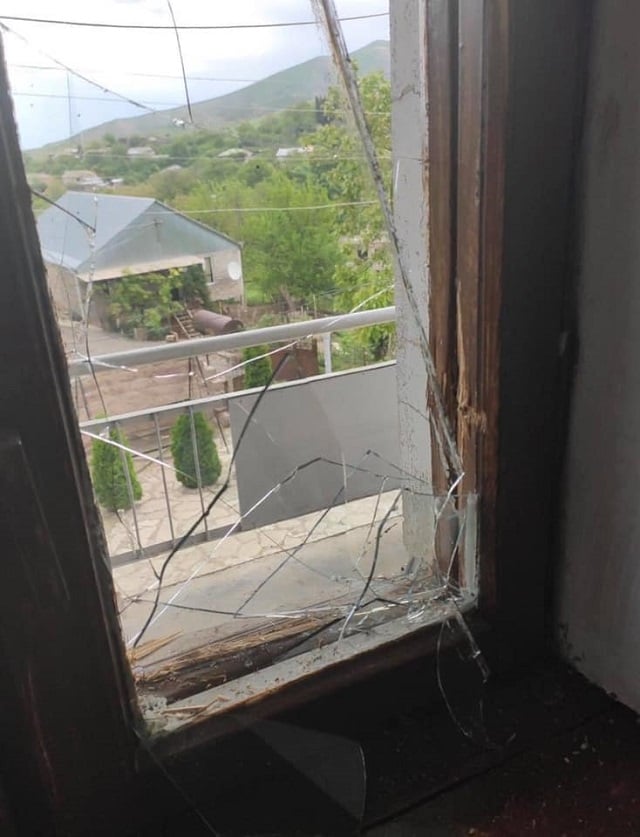
Window damaged in village of Berkaber, May 13, 2020 (Photo: Shushan Stepanyan, Press Secretary of the Minister of Defense at MoD of the Republic of Armenia)
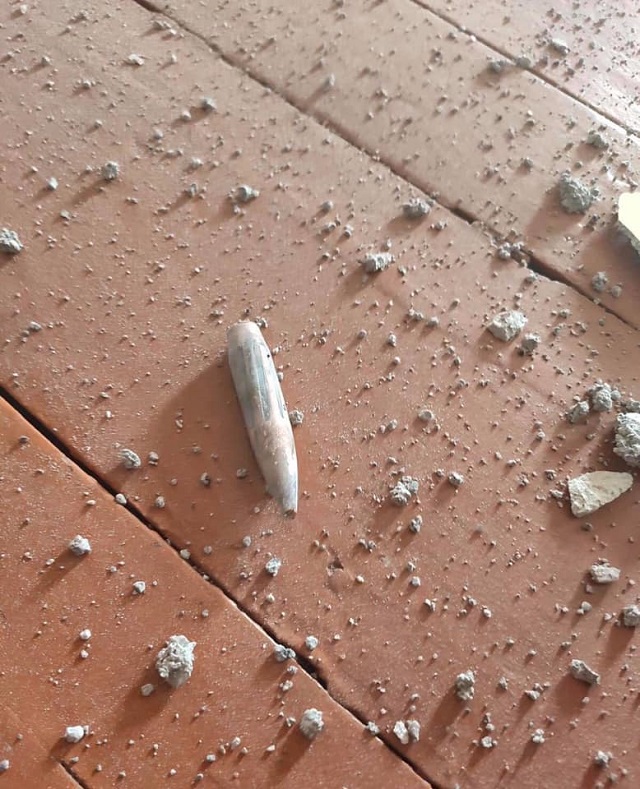
Bullets left behind in Berkaber home, May 13, 2020 (Photo: Shushan Stepanyan, Press Secretary of the Minister of Defense at MoD of the Republic of Armenia)
While defense analyst Richard Giragosian rates the risk of such incidents snowballing into renewed hostilities as relatively low, given the context, he agrees that the timing and extent of the exercise pose reasons for concern. He told the Armenian Weekly that the sheer size and scope of the maneuver, following a slightly smaller one in early March, presents “a dangerous sign of preparations for a possible later offensive.” Giragosian also warned that the global distraction caused by the pandemic might prove a tempting opportunity for leaders in Baku to attempt to replicate their offensive of April 2016.
On the diplomatic front, international leaders have reacted to these recent incidents with calls for increased cooperation rather than hostilities. During a May 19 video conference between OSCE Minsk Group Co-Chairs Igor Popov (Russia), Stephane Visconti, (France), Andrew Schoffer (US) and Armenian Foreign Minister Zohrab Mnatsakanyan, the parties agreed on the need to keep monitoring the LoC and set up an OSCE visit to the region once the COVID-19 related restrictions are lifted.
Raffi Elliott
Caption: Azerbaijan army begins military exercises on May 18, 2020 (Photo: Azerbaijan MOD)






















































